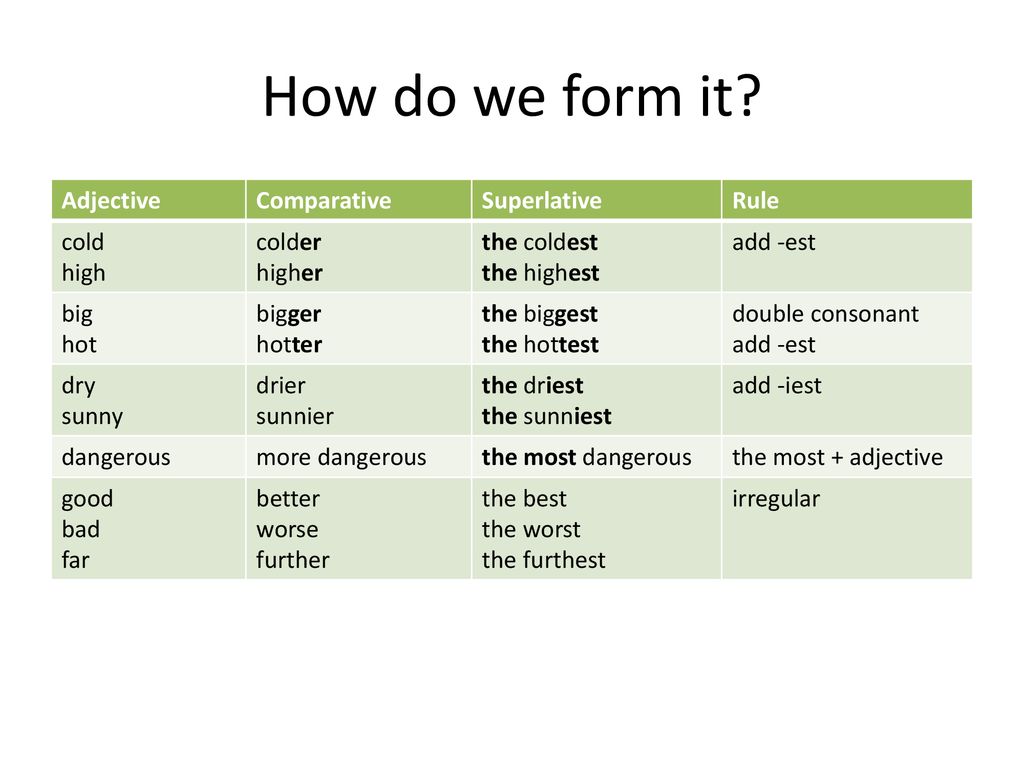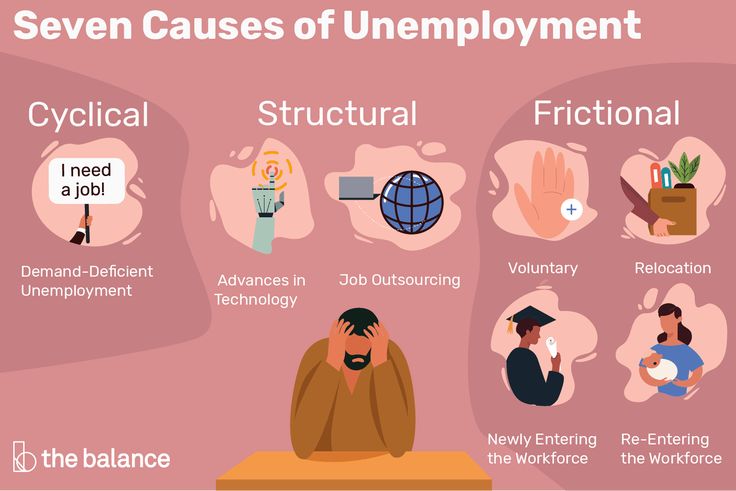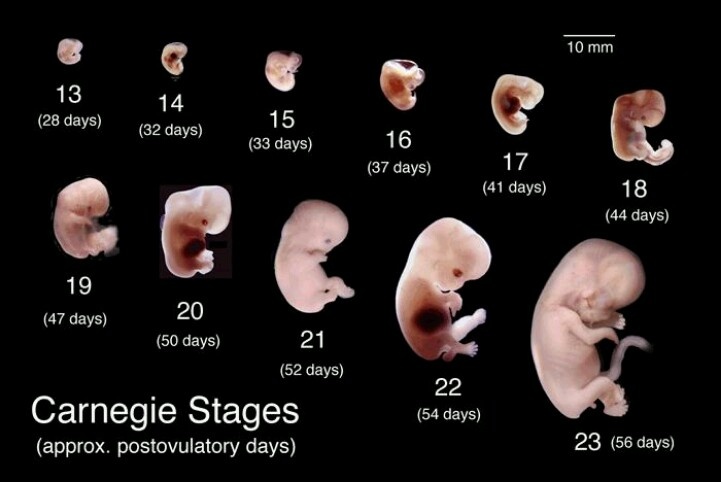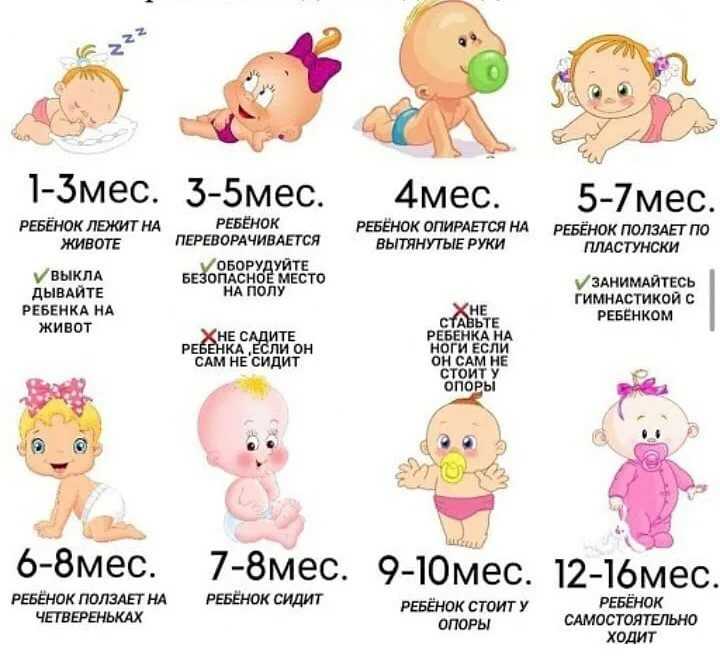How do you know your child is transgender
How to Know If Your Child Is Transgender
There is no simple test to tell if a child is transgender. Experts often refer to the idea of insistence, consistency, and persistence in terms of gauging whether a child is just going through a phase or not. This means the more insistent a child is, and the longer that insistence lasts, the less likely they are to change their mind about being a different gender.
While the following are possible signs of a child being transgender, there are no certainties.
What Does Transgender Mean?
Transgender – a person who experiences a gender identity or gender expression that is different from their assigned sex (at birth). Transgender teens tend to be an umbrella term, meaning in addition to individuals whose gender identity is opposite of their assigned sex, it includes individuals who do not consider themselves exclusively masculine or exclusively feminine (sometimes referred to as genderqueer, non-binary, bigender, pangender, or gender fluid. Some medical professionals categorize transgender as a third gender. Important to note is that transgender identification is independent of sexual orientation, and those who are transgender may identify as heterosexual, homosexual, bisexual, asexual, etc.
Gender dysphoria – the distress or struggle a person endures due to the incongruence of the sex and gender they feel they are in comparison to the sex and gender they were assigned at birth. This means the assigned sex and gender do not match the person’s gender identity.
Possible Signs of Transgender Child
Many children engage in behavior that challenges the typical gender norms and stereotypes and do not identify as transgender at all. Nonetheless, there are some possible signs that could indicate a child is transgender or the presence of gender confusion in a child.
- Lack of interest in “gendered” activities – if your child is transgender or questioning their gender identity, you may notice them wanting to participate in activities typically associated with the opposite sex.
 Of course, a child who is not transgendered may be interested in toys and/or games associated with the other sex, so it is important to not automatically assume this behavior means your child is transgender.
Of course, a child who is not transgendered may be interested in toys and/or games associated with the other sex, so it is important to not automatically assume this behavior means your child is transgender. - Hairstyle – typically, when a child is around 4 or 5 years old, they begin to want to have a say in their haircut and style. Transgender children tend to be much more vocal about their haircut and/or style and may protest if parents final say differs from what they want. Although every child is different, in general, transgender girls desire to have shorter hair, while transgender boys prefer the ability to grow their hair out.
- Disliking their name – if your child has a gendered-aligned name, it might be difficult for them to accept if they are trans. If you notice your child talking about changing their name, or requesting others call them by a different name (especially one that is the opposite gender), this could be a sign they are struggling with gender-related issues.

- Referring to themselves as the opposite gender – if you hear your child referring to themselves as the opposite gender (i.e. – your daughter says she is a boy), this could indicate they are transgender (or the presence of gender confusion). Often times, a transgender child will say, “I am a girl/boy” rather than “I wish I was a girl/boy.” If you recognize this behavior in your child, ask them “why” they are referring to themselves as a boy/girl.
- Bathroom behavior – a clear sign of the presence of gender identity issues in any child is their use of bathrooms opposite of their gender identity at birth. Yet, more often than not, this is not the first change in bathroom behavior parents may notice. Instead, transgender or gender-confused children may have accidents due to feeling inclined to “hold it” instead of walk into the bathroom designated for the other sex. Hopefully, the child is able to verbalize this to a parent or trusted adult. But if you notice changes in your child’s behavior around using the bathroom, it is okay to ask.

- Pronoun changes – as more people come out as transgender, the need for gender-neutral pronouns becomes apparent. Personal pronouns are important for all individuals. But for those who are questioning their gender identity, personal pronouns can mean the difference between acceptance and rejection by others. If your child is referring to themselves with gender pronouns opposite of their born gender identity, they could be transgender. Notice if your child feels more comfortable being referred to as the other sex; ask questions about their preferred pronouns.
- The desire to shop in the opposite gender’s clothing section – as with hairstyle, when a child is around 4 or 5 years old, they begin to want to have a say in what they wear. If, when you take your child shopping, they choose to shop in the opposite gender’s section, this might indicate your child is transgender. Of course, this could simply be a sign they want to experiment with different fashions, as many children dress and play in ways that challenge gender norms.
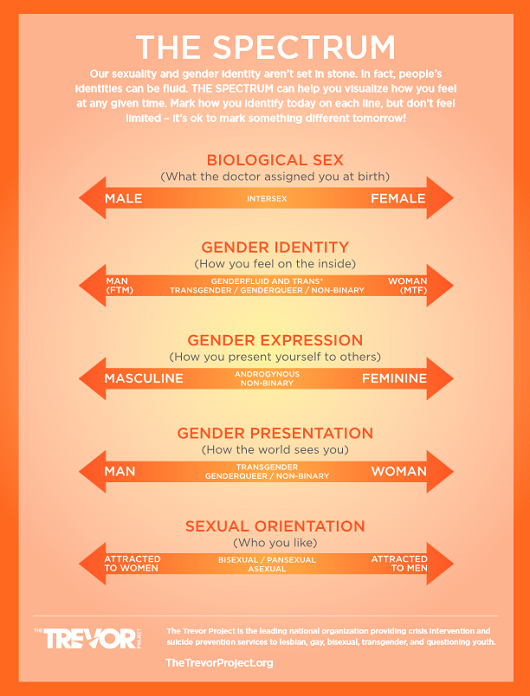
- Participating in opposite gender sports – while this is a large generalization, if your child expresses interest in participating in sports designated for the opposite gender, they may be transgender.
- Distress – an important indicator of any struggle or confusion in a child is the presence of distress. In terms of a child who is transgender (or questioning their gender identity), distress may show up in various ways such as daily arguments regarding clothing choices before school.
- Depression and/or suicidal thoughts – unfortunately, depression and suicidal thoughts are often present in transgender individuals and youth struggling with gender identity issues. The source of the depression may stem from a variety of concerns including:
- Difficulty accepting their identity,
- Fear of what it would be like to live as the gender they feel on the inside
- Rejection from peers, family, and/or friends
If you notice signs of depression in your transgender teen, or they are expressing the presence of suicidal thoughts, it is important to seek professional help.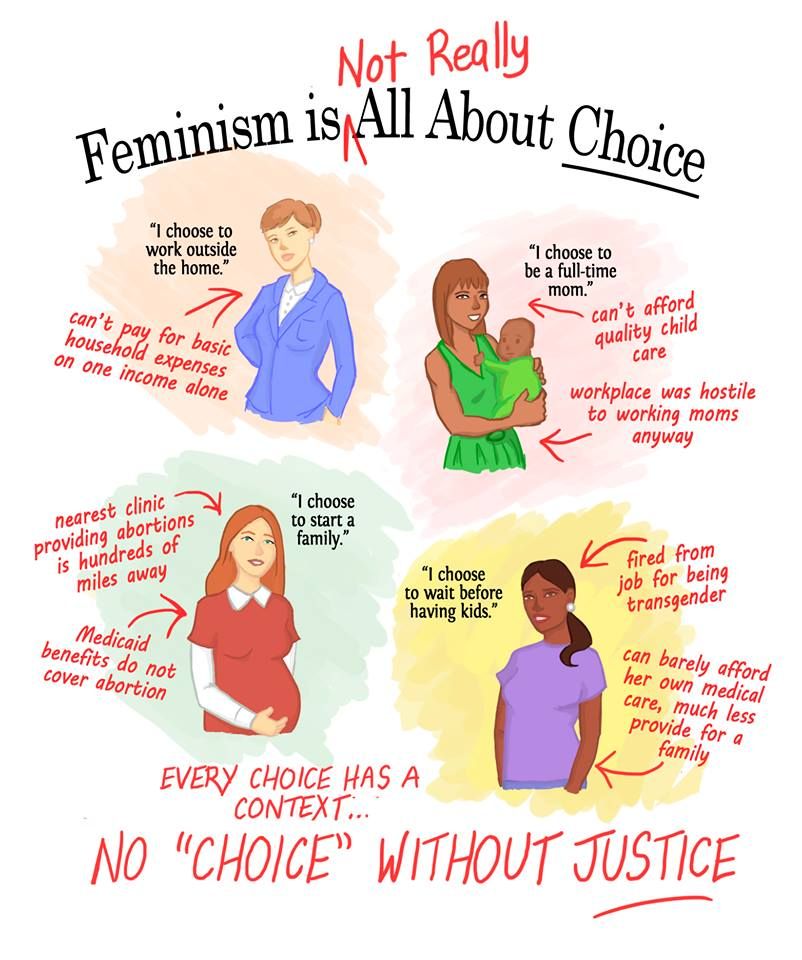
How to Support Your Transgender Child
Whether you a sure your child is transgender or uncertain as to whether they are questioning their gender, it is always helpful to seek professional support. Doctors recommend finding a therapist or counselor who specializes in gender identity issues and children. Unfortunately, many parents do not seek outside intervention for their child, due to hopes of it just being a phase. Regardless of if your child is experiencing something temporary, or truly questioning their identity, having a mental health professional can be extremely helpful.
A therapist can help your child (and the family unit as a whole) decide which changes to make, and the timeline of those changes. A therapist can also refer you to other supports and resources such as support groups, medical doctors, etc. If your child is transgender or questioning their gender identity, it is vital you (as the parent) have a place to express fears and confront personal attitudes about gender while not in the presence of your child.
Additionally, there is no shortage of information available for parents in the process of navigating this difficult terrain. It is important to educate yourself, not only for the purpose of knowing possible signs to look out for, but also to ask educated questions to your child and professionals.
Polaris Teen Center
Polaris Teen Center | Website | + posts
Polaris Teen Center is a residential treatment facility for teens and adolescents suffering from severe mental health disorders. Our highly accredited facility is fully licensed and certified in Trauma Informed Care and is a part of the Behavioral Health Association of Providers (formerly AATA).
Transgender Children & Youth: Understanding the Basics
Gender BasicsChildren are not born knowing what it means to be a boy or a girl; they learn it from their parents, older children and others around them. This learning process begins early. As soon as a doctor or other healthcare provider declares – based on observing the newborn’s external sex organs – “it’s a boy” or “it’s a girl,” the world around a child begins to teach these lessons. Whether it’s the sorting of blue clothes and pink clothes, “boys’ toys” and “girls’ toys” or telling young girls they’re “pretty” and boys they’re “strong.” It continues into puberty and adulthood as social expectations of masculine and feminine expression and behavior often become more rigid. But gender does not simply exist in those binary terms; gender is more of a spectrum, with all individuals expressing and identifying with varying degrees of both masculinity and femininity. Transgender people identify along this spectrum, but also identify as a gender that is different than the one they were assigned at birth.
Whether it’s the sorting of blue clothes and pink clothes, “boys’ toys” and “girls’ toys” or telling young girls they’re “pretty” and boys they’re “strong.” It continues into puberty and adulthood as social expectations of masculine and feminine expression and behavior often become more rigid. But gender does not simply exist in those binary terms; gender is more of a spectrum, with all individuals expressing and identifying with varying degrees of both masculinity and femininity. Transgender people identify along this spectrum, but also identify as a gender that is different than the one they were assigned at birth.
Gender identity and expression are central to the way we see ourselves and engage in the world around us. This is certainly true of transgender and gender-expansive children and teens, for whom family support is absolutely critical.
In fact, an increasing body of social science research reflects that gender-affirming behavior on the part of parents and other adults (teachers, grandparents, etc.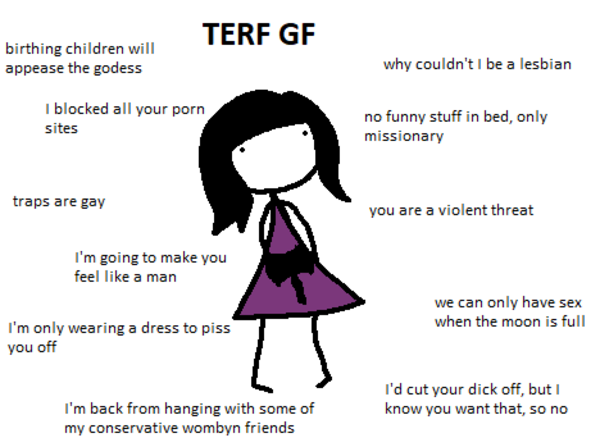 ) greatly improves mental health and well-being. The opposite is true---transgender children are more likely to experience anxiety, depression, and at greater risk of substance abuse and homelessness when their immediate caregivers are rejecting or hostile.
) greatly improves mental health and well-being. The opposite is true---transgender children are more likely to experience anxiety, depression, and at greater risk of substance abuse and homelessness when their immediate caregivers are rejecting or hostile.
It is important to know--and quite alarming, that research finds that transgender youth are at greatest risk of suicide (compared to their non-transgender peers) as a result of rejection, bullying, and other victimization.
In other words, for some transgender youth, family support can be the difference between life and death. Parents and caregivers can find resources, peer support, and professional guidance to help along the journey, and to insure that your child can not just survive, but thrive.
Is My Child Transgender….At some point, nearly all children will engage in behavior associated with different genders – girls will play with trucks, boys will play with dolls, girls will hate wearing dresses and boys will insist on wearing them – and gender nonconforming behavior does not necessarily mean that a child is transgender. That said, sometimes these behaviors can clue us in to what a child may be feeling about their gender – with some children identifying as another gender than the one they were assigned by the time they are toddlers.
That said, sometimes these behaviors can clue us in to what a child may be feeling about their gender – with some children identifying as another gender than the one they were assigned by the time they are toddlers.
The general rule for determining whether a child is transgender or non-binary (rather than gender nonconforming or gender variant) is if the child is consistent, insistent, and persistent about their transgender identity. In other words, if your 4-year-old son wants to wear a dress or says he wants to be a girl once or twice, he probably is not transgender; but if your child who was assigned male at birth repeatedly insists over the course of several months--or years, that she is a girl, then she is probably transgender. Children who are gender non-binary---in other words, they do not feel that they are a boy or a girl, but perhaps a bit of both, or neither, may not have the words at a very young age to capture that feeling, but over time it may become more clear to them, and ultimately to you, that they are non-binary, versus a trans girl or a trans boy.
Naturally, there are endless variations in the ways that children express themselves, so the best option if you think your child might be transgender is to consult a gender therapist. You can find our map of gender clinics here.
...or is my child gay or lesbian?Gender identity and sexual orientation are two different things. Being transgender is about an individual’s gender identity--whether they feel male, female, a little of both, or neither. Being gay, lesbian or bisexual is about an individual’s sexual orientation, which is our sexual or romantic attraction to people of the same gender, different genders, both or neither. While many children who go on to identify as lesbian, gay or bisexual express gender-expansive behaviors, whether they are transgender is about identity rather than attraction. Everyone possesses both a gender identity and a sexual orientation; in other words, a transgender person can also identify as gay, lesbian or bisexual.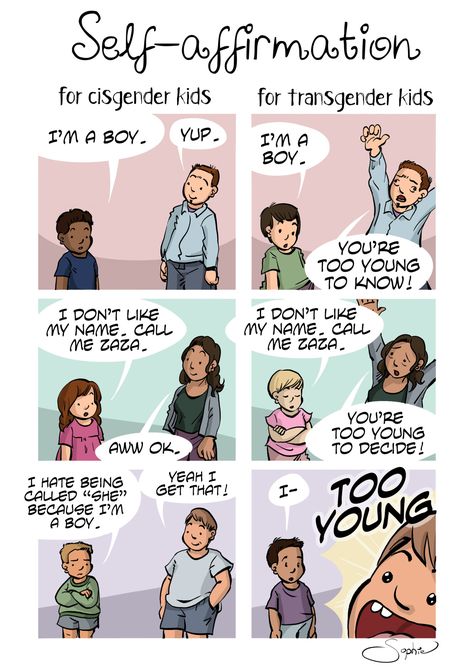
Gender dysphoria is the diagnosis typically given to a person whose assigned birth gender is not the same as the one with which they identify. According to the American Psychiatric Association’s Diagnostic and Statistical Manual of Mental Disorders (DSM), the term – which recently replaced Gender Identity Disorder – “is intended to better characterize the experiences of affected children, adolescents, and adults.” To be clear, transgender identity is not a mental illness. The “disconnect” transgender people often experience is a persistent and authentic disconnect between the sex assigned to them at birth and their internal sense of who they are. This disconnect is referred to by medical professionals as “gender dysphoria” because it can cause undue pain and distress in the lives of transgender people. The diagnosis of gender dysphoria is often the gateway to having insurance coverage for gender-affirming care and to allowing trans people to live as their most authentic selves.
Sure, most children and teens go through “phases” – like only wearing all black, dying their hair, being obsessed with a certain band or asking to go by a nickname – but being transgender or non-binary is not a phase---it is a journey, and trying to dismiss it can be harmful during a time when your child most needs support and validation.
Trying to change your child’s gender identity – either by denial, punishment, reparative therapy or any other tactic – is not only ineffective; it is dangerous and can do permanent damage to your child’s mental health. So-called “reparative” or “conversion” therapies, which are typically faith-based, have been uniformly condemned as psychologically harmful by the American Psychological Association, the American Medical Association, the American Psychiatric Association, and numerous similar professional organizations.
The most recent survey of high school students by the Centers for Disease Control finds that roughly 3% of adolescents and teens identify as transgender or non-binary.
While many transgender people say that they knew they were transgender as soon as they knew what “boys” and “girls” were--as young as age 3, for many others, the journey to living openly as their affirmed gender is longer one. For some, understanding their gender identity---whether transgender or non-binary, is a more complex process that lasts into their teens or adulthood. Stigma, lack of knowledge and fear of rejection by family and peers often keep transgender people from coming out as children or teens. Sometimes a transgender person will come out as gay, lesbian, or bisexual before recognizing their gender identity or coming out as their true gender. No matter when your child comes out, knowing they have your support is critically important.
Simple Ways to Start Supporting Your Transgender Child- Always use the name and pronouns that align with your child’s gender identity.

- Be your child’s advocate – call out transphobia when you see it and ask that others respect your child’s identity.
- Educate yourself about the concerns facing transgender youth and adults.
- Learn what schools can and should do to support and affirm your child.
- Encourage your child to stand up for themselves when it is safe to do so, and to set boundaries when necessary.
- Assure your child that they have your unconditional love and support.
- The Human Rights Campaign’s Transgender Children and Youth page includes resources for families, community members, school officials and more.
- Our Parents for Transgender Equality Council members share their stories and provide educational resources for parent.
- Co-published with the American Academy of Pediatrics and the American College of Osteopathic Pediatricians, the Human Rights Campaign Foundation’s “Supporting & Caring for Transgender Children” is a groundbreaking resource that explains how families and healthcare professionals can help transgender and gender-expansive children thrive.

- HRC Foundation's Welcoming Schools is the nation's premier professional development program providing training and resources to elementary school educators on a range of issues, including how to support transgender and non-binary students.
- Trans Families provides online support groups, resource directories, and educational resources for parents of transgender children
- PFLAG is one of the oldest organizations in the country that supports the families, friends and allies of LGBTQ people. PFLAG has local chapters across the United States, including groups specifically for families with transgender children.
Gender Spectrum has adapted Family Acceptance Project research for parents and family members of transgender children.
This is not a fantasy: How to understand that your child is
While preparing one article about transgender children, we noticed that parents of 3-5-year-old children are “rushing” to accept their different gender identity. And we asked ourselves, is such a reaction normal? Or do parents want to quickly come to terms with the new gender of the child and forget the moment of coming out like a bad dream? Other parents, on the contrary, begin to panic and “treat” such children, sincerely believing that they have a split personality or they just “play too much”. To dispel the myths about transgenderness and answer our questions, we asked a psychologist, family consultant-mediator Maria Fabricheva. nine0004
And we asked ourselves, is such a reaction normal? Or do parents want to quickly come to terms with the new gender of the child and forget the moment of coming out like a bad dream? Other parents, on the contrary, begin to panic and “treat” such children, sincerely believing that they have a split personality or they just “play too much”. To dispel the myths about transgenderness and answer our questions, we asked a psychologist, family consultant-mediator Maria Fabricheva. nine0004
Maria, at what age can a child become aware of their gender identity?
According to the theory of standard analysis, transgenderness is not considered a personality disorder in today's world. Transgender is not a good/bad marker. It is important to understand that these are normal, good people with just such a feature. Being transgender does not mean that a person is bad, perverted or ill-mannered. This is not true.
As regards age, a child already at the age of three is at the stage of identity and strength. In English, the term "power" is used - strength, power. That is, the child has a need to study society, realize his strength, acquire communication skills, social adaptation and his gender identity. Therefore, if a child at the age of three declares that he is a boy or a girl, then such behavior is fully consistent with this stage of his development. So transgenderism can manifest itself precisely at this age. nine0005
In English, the term "power" is used - strength, power. That is, the child has a need to study society, realize his strength, acquire communication skills, social adaptation and his gender identity. Therefore, if a child at the age of three declares that he is a boy or a girl, then such behavior is fully consistent with this stage of his development. So transgenderism can manifest itself precisely at this age. nine0005
How can you tell if this is not a child's fantasy?
It is quite difficult for parents at this age to understand whether it is a fantasy or not. Parents experience a culture shock: “My daughter doesn’t want to be a girl, my son doesn’t want to be a boy, so I’m a bad parent” or “Let’s treat the child.” Here you need to say “stop” and give parents time. There is nothing to treat here, because, as I said at the beginning, transgenderism is not a personality disorder. Therefore, it will not be possible to treat by force anyway, but it will only result in injury to the child, because they do not accept him as he is, but try to correct and make him comfortable. Exactly the same attitude towards teenagers who declare their homosexuality. Homosexuality, too, thank God, is no longer cured, but all the same, parents make attempts to change the child, but not for his good, but for the good of social norms. nine0005
Exactly the same attitude towards teenagers who declare their homosexuality. Homosexuality, too, thank God, is no longer cured, but all the same, parents make attempts to change the child, but not for his good, but for the good of social norms. nine0005
In such situations, I advise parents to be calm. If a child who is biologically male claims to be a girl, do not rush to dress him up in dresses. We need to watch how it develops. And if it was a fantasy, if the child tried on another social role, for example, he likes to watch how his mother puts on makeup, and he decided to try to do it too, but in a conversation he accepted the information that makeup is for girls, not for boys, and he stopped imitating his mother, but began to imitate his father, which means that we are not facing a transgender child. If the child shows more and more similar interests, then you need to observe. However, it is still difficult to decide on your own in this situation. Just exhale and contact healthy psychotherapists who are ready to deal with this issue and are ready to help the child adapt.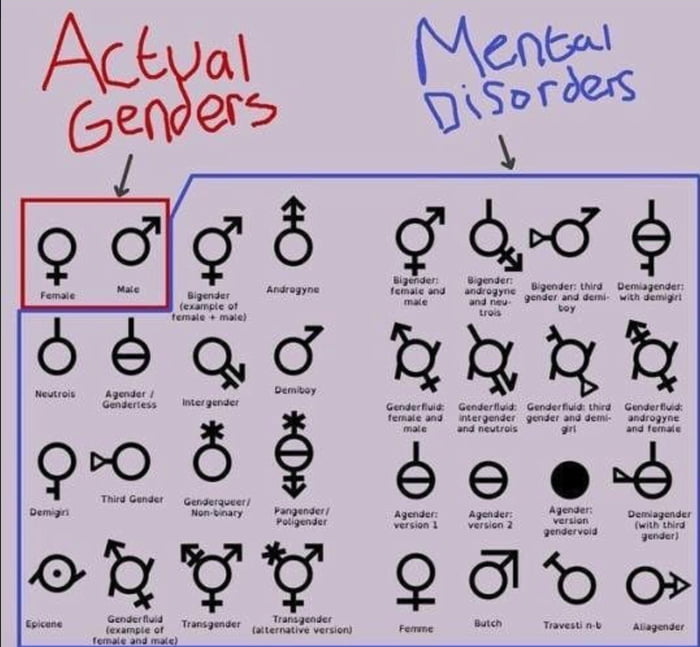 nine0005
nine0005
Before adolescence, it is extremely difficult to change or correct anything. There can only be acceptance of the child and observation of him. And it is important to comply with social rules so as not to harm the child. In general, any diagnosis of a personality disorder is not given to children before adolescence. But already in adolescence, 13–15 years old, the child goes through the stage of identity and strength, gender association again, and secondary sexual characteristics begin to actively develop in him. nine0005
Education should not be aimed at bringing up not a transgender person, but a person who is healthy in terms of values, who will feel comfortable having such a feature. You should not make a tragedy out of this, but you should give the child the opportunity to fully manifest.
It is also important to remember that these are all elements of development. Children play games, trying on different roles. And it is very important for parents not to fantasize more than they really are.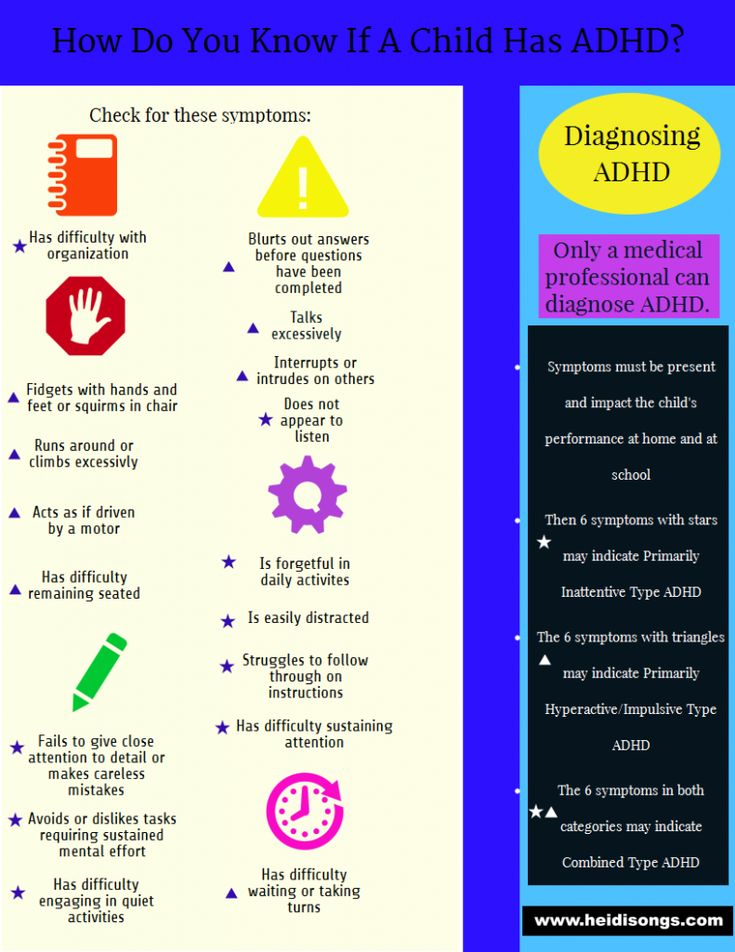 What I mean? At the stage of identity and power, a three-year-old child may declare that he is not a boy, but a girl, or not a girl, but a boy, but this cannot be a 100% guarantee that we are transgender. nine0005
What I mean? At the stage of identity and power, a three-year-old child may declare that he is not a boy, but a girl, or not a girl, but a boy, but this cannot be a 100% guarantee that we are transgender. nine0005
- See also: My grandson is transgender
Well, is it possible that if a girl has short hair, then she will perceive herself as a boy? Or the boy likes to wear tutu skirts and his mother allows him to do this in public. Can such changes in appearance or encouragement of behavior somehow affect the child in the future?
Haircuts do not exactly affect. A child under three years old does not separate his “I” from his mother, he is in a healthy symbiosis with her. He is connected with the mother, so whatever happens to her, happens to the child. Symbiosis begins with uterine development and continues during the first year of life. Then the child goes through the first separation from the mother when he takes his first steps. During this period, his “I” is the whole world, he does not yet have a self-identity. Self-identity comes at 2.5 - 3 years, just when the child, looking at himself in the mirror, speaks of himself not in the third person, but in the first: "It's me." At the age of three, the child begins to study his body, ask various questions, looking for a gender difference. nine0005
Self-identity comes at 2.5 - 3 years, just when the child, looking at himself in the mirror, speaks of himself not in the third person, but in the first: "It's me." At the age of three, the child begins to study his body, ask various questions, looking for a gender difference. nine0005
And, returning to your examples, if you say to a girl: “Tanya got a new haircut”, then she will understand that she, Tanya, has changed her hairstyle. If the girl is told in a certain key: “You look like a boy,” and the child catches this key, then he can decide that parents like it better when she looks like a boy. In this case, it is highly likely that the daughter will want to please her parents with such an appearance. This is not a natural transgender, but a scenario choice. And these are different things. nine0005
There are situations when an expectant mother dreams, for example, of a daughter, but after having an ultrasound scan in the second trimester, when the biological sex of the child is clearly understood, she finds out that she will have a son and becomes very upset and seems to reject this fact.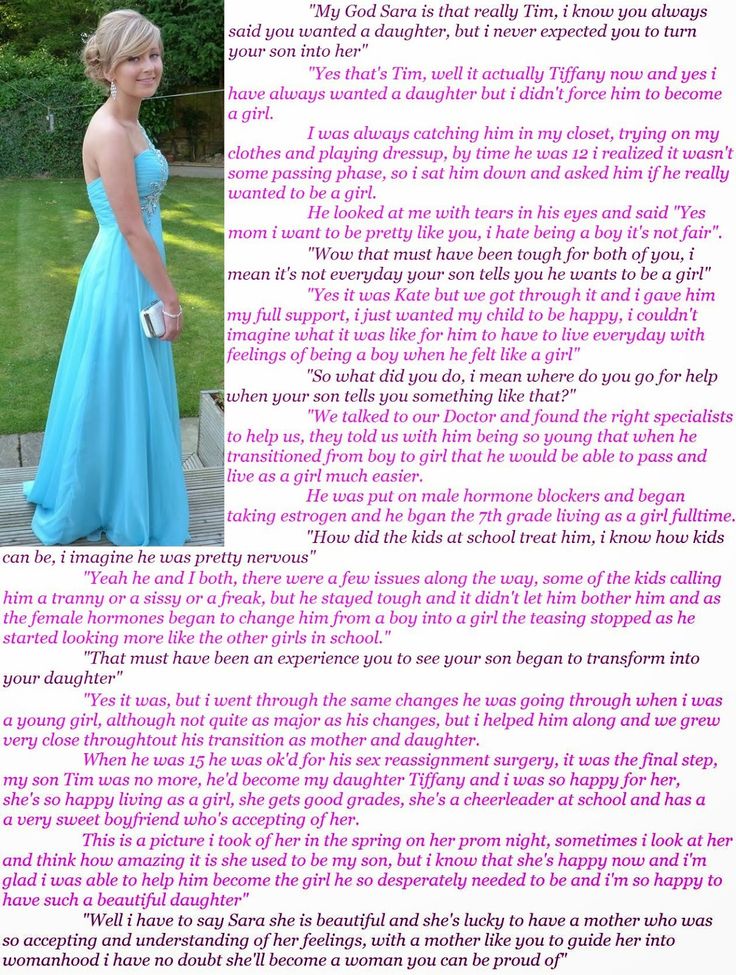 This situation can also affect the child's self-perception when, while in the womb, he feels that he will not be accepted in this gender. And I mean it quite seriously. The perinatal period is one of the most important in terms of acceptance. And then such stories can happen when a child by the age of three happily declares that he is not a girl, but a boy, or vice versa. Or it happens that dad wanted a son, but a daughter appeared. But the fact is that a small child does not verbally communicate with his parents, he reads the entire emotional background. And if, on a social level, parents smile and say that they are happy with any child, but on a psychological and emotional level they think completely differently, this affects the child, even if he is still inside the womb. And he can already make so-called protocol decisions. The scenario protocol is written deep in the body, it is not verbal. This is when the body, having made a decision, starts playing games. This is where the feeling of “I’m not in my body” comes from.
This situation can also affect the child's self-perception when, while in the womb, he feels that he will not be accepted in this gender. And I mean it quite seriously. The perinatal period is one of the most important in terms of acceptance. And then such stories can happen when a child by the age of three happily declares that he is not a girl, but a boy, or vice versa. Or it happens that dad wanted a son, but a daughter appeared. But the fact is that a small child does not verbally communicate with his parents, he reads the entire emotional background. And if, on a social level, parents smile and say that they are happy with any child, but on a psychological and emotional level they think completely differently, this affects the child, even if he is still inside the womb. And he can already make so-called protocol decisions. The scenario protocol is written deep in the body, it is not verbal. This is when the body, having made a decision, starts playing games. This is where the feeling of “I’m not in my body” comes from. nine0005
nine0005
And if a child of the same sex spends a lot of time with children of the opposite sex, can this in any way affect his self-identification?
A child can imitate, this is normal. Because in imitation the child develops and finds himself. Imitation and transgenderism are two very different things. I am in favor of explaining the difference to children, including gender. For example, when my son became interested in a bottle of nail polish, I explained to him that in our society it is not customary for boys to paint their nails. And if a child is interested in something, exploring this world, he asks his parents for normal intelligible explanations of how the world works and how a man differs from a woman, be it the body, the manifestation of emotions, wardrobe, self-care. nine0005
If a boy or girl resists, does not want to wear a certain type of clothing, and all this is very emotionally colored, up to tantrums, then here you also need to behave calmly and seek help from a specialist.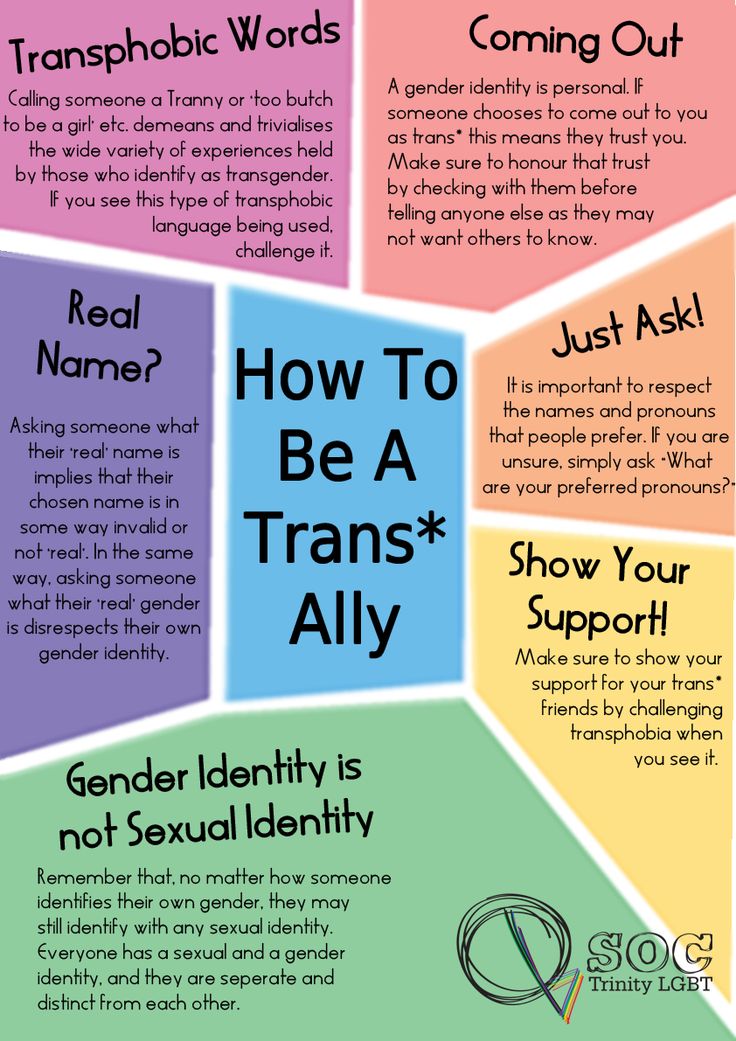 Because such manifestations may indicate not so much about transgenderism, but that something else is not right, to the point that the child is simply unpleasant when certain material touches the body. All these nuances require research and clarification, especially in such subtle issues as gender and sexual orientation. nine0005
Because such manifestations may indicate not so much about transgenderism, but that something else is not right, to the point that the child is simply unpleasant when certain material touches the body. All these nuances require research and clarification, especially in such subtle issues as gender and sexual orientation. nine0005
- See also: Non-Binary People: The Campus Experience
First of all, , I need to honestly answer the question, what happens to me when I see that something is wrong with my child? Am I nervous? I'm afraid? What am I afraid of? The fact that I will have a special child and then it will be difficult for him to adapt, and I want to know how to solve this problem? Or am I afraid that everyone will find out about this and say, whom did you give birth to, how bad are you? All these are normal processes, because we are living people, we have our own fears, complexes, worldview. nine0005
Secondly, , you need to clarify with yourself what is your personal attitude towards the LGBT community.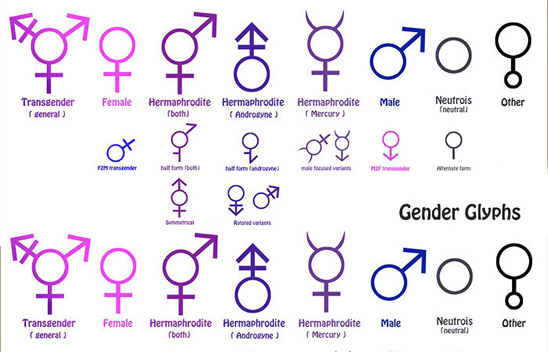 What do you even know about these people? And this is your opinion, or the opinion of the post-Soviet society, when people were imprisoned? Remember that now is the 21st century, information is available, and before drawing conclusions, it is important to obtain normal knowledge.
What do you even know about these people? And this is your opinion, or the opinion of the post-Soviet society, when people were imprisoned? Remember that now is the 21st century, information is available, and before drawing conclusions, it is important to obtain normal knowledge.
Thirdly , when you understand that this is not a disorder, it is important to accept and understand that if you have such a child, then this has nothing to do with you as a person. If you have a special child, you remain a good person and a good parent. It is necessary to separate these planes. If this is ruining your life, then you need to figure out why. In fact, it doesn't interfere at all. These are two parallel processes. nine0005
Fourth, , it is important to understand what to do with it. Parents love their children unconditionally. And to love unconditionally is to accept a person as he is, and not try to change him for himself.
Now about the search for a specialist. The task of a psychotherapist is not to re-educate someone, but to help a person accept his characteristics and adapt. It is important to find a specialist who does not make value judgments, but who will begin to clarify what you want. He will clarify with the child why he behaves in such a way in order to find out the true reason. Because it can be a real transgender, or it can be an imitation of someone, a tribute to fashion, etc. Now there are a lot of charismatic transgender artists, and children, looking at them, can light up and begin to imitate, but at the same time not be transgender. It's just that they may like a certain character and want to be the same. The task of the psychologist is to find out what the child really wants: to be public, to have a lot of followers on Instagram? This is the moment of research what is happening with this little person who is now developing and looking for himself in all planes of life - physiological, psychological, gender. Thus, the child joins a certain subculture, and when you start working with him, you understand that behind the external manifestations there are qualities - strength, courage, honesty.
The task of a psychotherapist is not to re-educate someone, but to help a person accept his characteristics and adapt. It is important to find a specialist who does not make value judgments, but who will begin to clarify what you want. He will clarify with the child why he behaves in such a way in order to find out the true reason. Because it can be a real transgender, or it can be an imitation of someone, a tribute to fashion, etc. Now there are a lot of charismatic transgender artists, and children, looking at them, can light up and begin to imitate, but at the same time not be transgender. It's just that they may like a certain character and want to be the same. The task of the psychologist is to find out what the child really wants: to be public, to have a lot of followers on Instagram? This is the moment of research what is happening with this little person who is now developing and looking for himself in all planes of life - physiological, psychological, gender. Thus, the child joins a certain subculture, and when you start working with him, you understand that behind the external manifestations there are qualities - strength, courage, honesty. nine0005
nine0005
There is another point - we all need attention. When a child, being in his gender, is invisible to his family, he lacks care and attention. But if a boy puts on a dress or a girl imitates the boys, then the children get a lot of attention.
Have you encountered transgender children in your practice?
I have not worked with children, but I have worked with gay people and transgender adults. They do not come with requests that they want to change their orientation back, no. They have inquiries about how to improve interpersonal relationships, how to open up to parents, and so on. I don’t work with teenagers now, because I have encountered such a problem when a child is brought to the so-called “correction”, while the parents are convinced that they personally have no problems. Yes, the child receives correction, support, but when he returns to the family, everything starts anew. There are a lot of conflict situations when the parent is dissatisfied with the work of the psychologist, because he brings the child in order for the psychologist to make him comfortable for the parent, and instead the psychologist begins to work with what is convenient for the child. I'm all for working with the whole family. nine0005
I'm all for working with the whole family. nine0005
When parents rush to accept a different self-identification of a child at an early age, can this be regarded as an act of selfishness on their part? Like, we will quickly come to terms with the fact that he is of a different gender and avoid psychological trauma in the future, because it is easier to accept the situation when the child is very small than already an adult.
Yes, it could be. Remember, at the beginning, I said that a healthy norm is important here? In our society, the game "either all or nothing" is popular. When parents rush to look for specialists and treat, or take a completely passive position, up to maintaining non-standard behavior, when their son is allowed to wear dresses, for example. The passive situation is not entirely good. As well as panic beyond measure. Neither situation is healthy. A healthy adult attitude is the middle ground—figuring out what's bothering you and doing what's good for both you and the baby. Find out if he is really transgender and how to help him adapt, or if he lacks your attention and has found a way to get it. In the second case, the issue of correction is solved much easier - if you pay attention to him qualitatively, then his behavior will begin to correspond to his gender. If we talk about the first case, then the task here is more complicated, because in the future the child will have hormone therapy, possibly a sex change operation, he needs to finish school, get a higher education, find a job, find himself, have financial support in order to be able to live in comfort with you, and at the same time not be weighed down by your peculiarity. nine0005
Find out if he is really transgender and how to help him adapt, or if he lacks your attention and has found a way to get it. In the second case, the issue of correction is solved much easier - if you pay attention to him qualitatively, then his behavior will begin to correspond to his gender. If we talk about the first case, then the task here is more complicated, because in the future the child will have hormone therapy, possibly a sex change operation, he needs to finish school, get a higher education, find a job, find himself, have financial support in order to be able to live in comfort with you, and at the same time not be weighed down by your peculiarity. nine0005
Should I turn to the LGBT community for help?
In order to understand what is happening with the child, you can contact, but even there it is important to find understanding people. They will help and find a psychologist, and clarify many issues. Therefore, parents should take off the crown and ask for help, for example, famous transgender people. Believe me, these people will not drag your child to their side, because they will not wish anyone to go the way they have overcome. On the contrary, these people will support, give information, explain what happened to him when he was 3 years old, 6 years old, 12 and 28, because they are at the core of this problem, and like no one knows what awaits this child. nine0005
Believe me, these people will not drag your child to their side, because they will not wish anyone to go the way they have overcome. On the contrary, these people will support, give information, explain what happened to him when he was 3 years old, 6 years old, 12 and 28, because they are at the core of this problem, and like no one knows what awaits this child. nine0005
Prepared by: Tanya Kasyan, Ira Kerst
Illustration by Maria Kinovich
— Read also: Confidential and non-toxic: 7 rules to help build a healthy relationship with a child 9000 //Psychological newspaper
- #practice
- #psychotherapy
- #child psychology
- #family therapy
- #psychiatry
- #video materials
- videoteka
Author
- Ioffe Elena Viktorovna
Master class "Transgender child: what is wrong with the family?" - methodical analysis of film material on the example of the film "My Life in Pink" (1997, dir.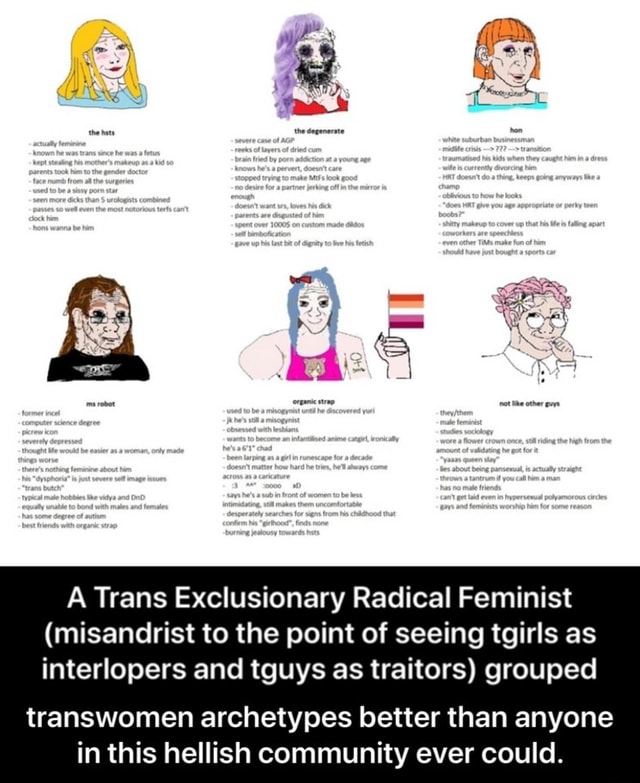 Alain Berlin), - took place within the framework of the 5th All-Russian Psychological Festival "Another Art Therapy: Film, Drama, Clown-.. .". Moderator: Elena Viktorovna Ioffe – Candidate of Psychological Sciences, Associate Professor of the Department of Human Psychology, Russian State Pedagogical University. A.I. Hertsen, Associate Professor of the Department of Psychotherapy and Sexology, North-Western State Medical University. I.I. Mechnikov; member of the Coordinating Council for the implementation of the National Action Strategy for Women for 2017-2020 under the Government of St. Petersburg; member of SPbPO; member of the St. Petersburg Community of Specialists Helping the Family. nine0005
Alain Berlin), - took place within the framework of the 5th All-Russian Psychological Festival "Another Art Therapy: Film, Drama, Clown-.. .". Moderator: Elena Viktorovna Ioffe – Candidate of Psychological Sciences, Associate Professor of the Department of Human Psychology, Russian State Pedagogical University. A.I. Hertsen, Associate Professor of the Department of Psychotherapy and Sexology, North-Western State Medical University. I.I. Mechnikov; member of the Coordinating Council for the implementation of the National Action Strategy for Women for 2017-2020 under the Government of St. Petersburg; member of SPbPO; member of the St. Petersburg Community of Specialists Helping the Family. nine0005
Here is an excerpt from the video of the second part of the master class:
“... I called my master class “Transgender child: what is wrong with the family?”. I will not describe the cases that I encountered in clinical trials; the stories are very complex, but every time I am convinced that these are family situations.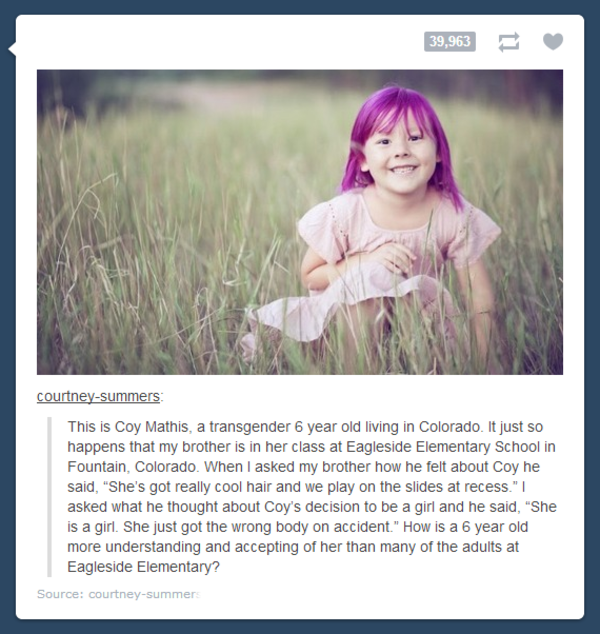 And by observing situations in the families of stars, we can also trace the family context. Charlize Theron adopted the boy, he grew up safely and enjoyed the diva mom until the moment she adopted the girl. What happens in this situation with the child, what question does he ask this world? He asks: “Why did I stop receiving all the attention, where does it go?”. When girls are dressed up, there is always enthusiasm, attention. What do you want the boy to do? Of course, join it. If girls get so much attention, why shouldn't I be a girl? And this immediately returns special attention to him, he is again in the spotlight. A special mother must have a special child, and the mother accepts the special child and begins to accompany him. nine0005
And by observing situations in the families of stars, we can also trace the family context. Charlize Theron adopted the boy, he grew up safely and enjoyed the diva mom until the moment she adopted the girl. What happens in this situation with the child, what question does he ask this world? He asks: “Why did I stop receiving all the attention, where does it go?”. When girls are dressed up, there is always enthusiasm, attention. What do you want the boy to do? Of course, join it. If girls get so much attention, why shouldn't I be a girl? And this immediately returns special attention to him, he is again in the spotlight. A special mother must have a special child, and the mother accepts the special child and begins to accompany him. nine0005
In the family of Angelina Jolie and Brad Pitt, their daughter Shilo dresses in men's clothes, she is called John. When Angelina and Brad formed a couple, they only had adopted children, and the whole world was waiting for a child born from these handsome "gods". When Shiloh, their first natural child, was born, the photographers went crazy, they were ready to pay millions in royalties for photos and stuff. She was the center of attention and was treated like a special child. Then twins are born. And what happens to the status of Shiloh? Sibling competition appears. The child is 2 years old, she knows that she is a girl, but what else does she know about herself? Nothing. She has no other way to express herself. What can she give to this world to regain interest in herself? nine0005
When Shiloh, their first natural child, was born, the photographers went crazy, they were ready to pay millions in royalties for photos and stuff. She was the center of attention and was treated like a special child. Then twins are born. And what happens to the status of Shiloh? Sibling competition appears. The child is 2 years old, she knows that she is a girl, but what else does she know about herself? Nothing. She has no other way to express herself. What can she give to this world to regain interest in herself? nine0005
The child has his gender identity and can sacrifice it to be in the spotlight again. And it really returns attention by the same mechanism, they are similar. You understand that it is not the child himself who chooses his tie, jacket - all this is reinforced by the environment. Here are photos of Cher and her daughter, who became her son. In this case, another mechanism operates, which was launched in adolescence: it is categorically impossible for a girl to compete with her mother-queen, the chance to be a worthy continuation of the dynasty is to go to another sex. nine0005
nine0005
Can a child be sent there? We will discuss this today using the example of the film "My Life in Pink". This is a fictional story in which the authors have clearly placed the accents, where we can linger to think about who makes mistakes at what moment, what actions can be taken so that mistakes do not lead to the growth of this problem. Because we must remember that there are a large number of children who have doubts or are gender non-conforming. They completely overcome their doubts by prepuberty, when bodily changes take place ...
We will not talk about diagnoses that are associated with chromosomal, hormonal, morphological aspects, because this is a category of medical diagnoses, we take the version of the biological norm. We are talking about the fact that gender identity is a kind of construct that arises as a result of gender socialization. And the family context in which the child grows up plays a huge role...”
Video recording of the second part of the master class by E.V. Ioffe “Transgender child: what is wrong with the family?”
Update as of September 20, 2019: responding to the ongoing discussion, the author invites readers to read the full presentation for the master class: presentation in pdf format
VI All-Russian Festival of Practical Psychology "Where the days are cloudy and short" will be held in St. Petersburg on February 6-8, 2020. Colleagues, make a decision to participate as early as possible. We are waiting for you at the festival! nine0005
Published on September 17, 2019
Author
Ioffe Elena Viktorovna
associate professor, candidate of psychological sciences. Associate Professor, Department of General and Social Psychology, Institute of Psychology, Russian State Pedagogical University. A.I. Herzen. Associate Professor of the Department of Psychotherapy, Medical Psychology and Sexology, North-Western State Medical University.
